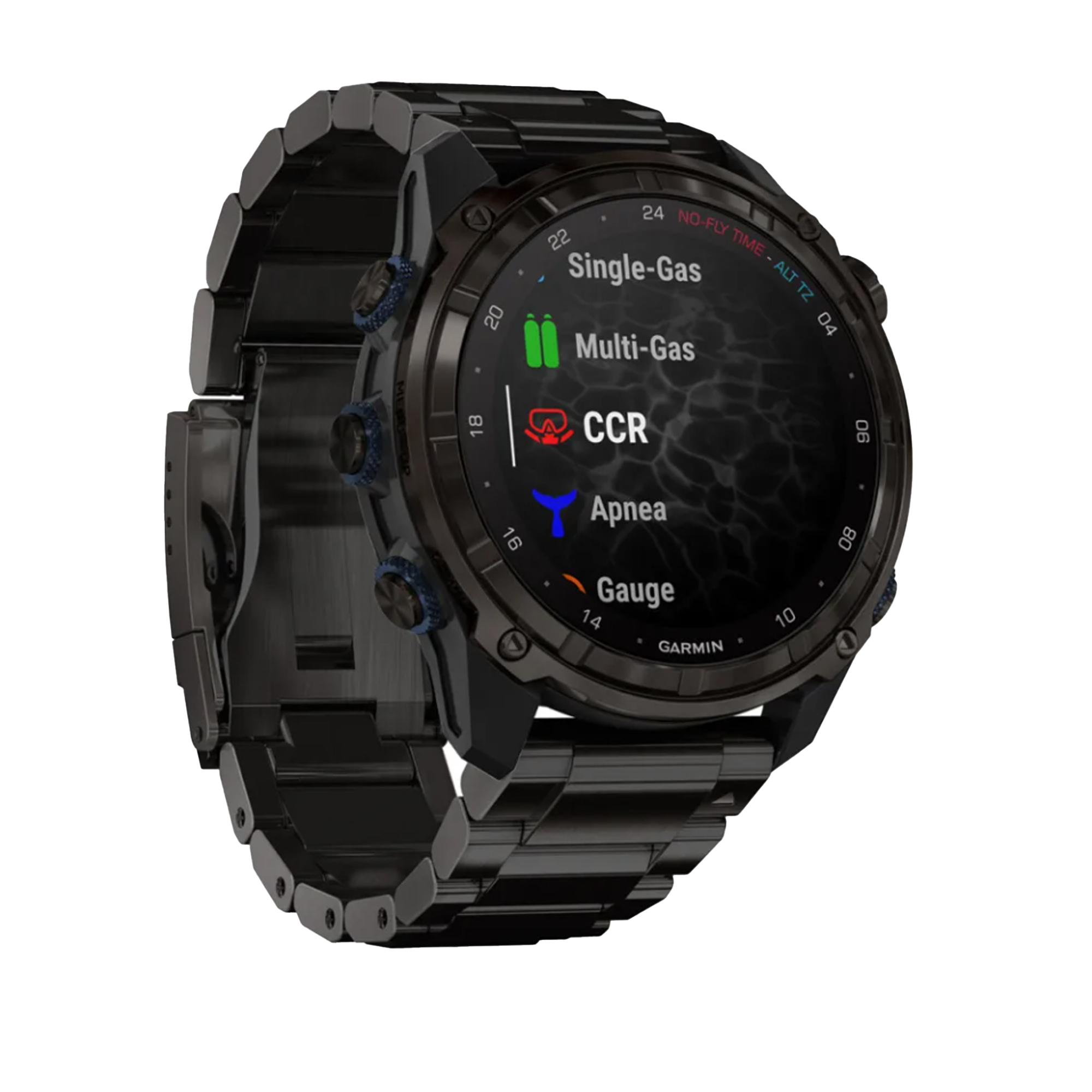Navigation
We sell the full range of Catalina Cylinders aluminium scuba diving cylinders. Catalina Cylinders is the leading manufacturer of high and low-pressure aluminium scuba diving gas cylinders.
Which Size Aluminium Scuba Cylinder Is Right For You?
The right choice of aluminium scuba tank is mostly dependent on what you're using it for.
- Catalina S80 (11.1 litre, 80 cubic foot), 207 bar — The S80 is the benchmark 'Standard Aluminium 80' cylinder used by the majority of recreational sport divers worldwide. A pair of these S80 size cylinders is the most popular sidemount choice. They are also used as stage cylinders by technical divers doing very long run times.
- Catalina S40 (5.7 litre, 40 cubic foot), 207 bar — The S40 is a popular for stage cylinders by technical divers, and as bailout cylinders for rebreather divers.
- Catalina S19 (2.7 litre, 19 cubic foot), 207 bar — The S19 makes an excellent choice as an emergency air source tank (pony bottle) for recreational sport divers, and as bailout cylinders for rebreather divers. It has also become popular as an oxygen deco tank as its capacity is plenty for all but the most extreme dives.
Low and High Pressure Aluminium Scuba Diving Cylinders
Aluminium scuba cylinders, unlike steel cylinders, don't rust, they oxidise. The oxidisation of aluminium forms a protective coat that hinders the continuation of corrosion making aluminium cylinders less likely to be condemned due to excessive corrosion.
Catalina Cylinders are high grade aluminium constructed especially to meet Australian safety standards.
- Negatively buoyant when empty
- Rugged enough for rental gear or sport diving
- Available in two different pressure ratings: 228 bar and 207 bar
- Available with or without DIN / K convertible valve
Regulation and Inspection: All Catalina seamless aluminium alloy compressed gas cylinders are manufactured in accordance with US Department Of Transport (DOT) 3AL and Transport of Canada (TC) 3ALM requirements. Every cylinder is inspected and tested by a DOT and TC authorised independent inspection agency. All Catalina cylinders supplied in Australia are stamped with the Australian Standards Authority Number.
Material: Every cylinder is produced from high strength aluminium alloy 6061-T6
Neck Thread: 3/4 inch – 14 NPSM
All cylinders from The Scuba Doctor dive shop are visually inspected and shipped with a current hydrostatic date (except where indicated).
J5 Yellow Submarine
![]() Wreck Dive |
Wreck Dive | ![]() Boat access
Boat access
![]()
![]()
![]()
Diesel Electric Submarine | Max Depth: 36 m (118 ft) — Graveyard
The J5 Yellow Submarine, originally HMS J5, later HMAS J5, is one of the J class submarines designed and built during WW1 by the British Royal Navy.
The J5 Submarine is popularly known as the 36 Metre Sub, the 120 Foot Sub, the Yellow Submarine due to its coverage in part by yellow zoanthids, or the Intact Sub. She sits upright on a sandy bottom. Penetration is possible at several points, where, apparently, plates were removed prior to scuttling. She lies facing North-South (bow South) in 36 metres of water, her conning tower rising to 30 metres.
Diving the J5 Submarine Shipwreck
The J5 Submarine shipwreck is covered in Yellow Zoanthid Anemone, especially around the bow, stern and the conning tower, which gives rise to it being commonly called the 'Yellow Submarine'. There are sponges and ascidians as well. Large schools of fish can be seen, typically around the conning tower, which adds to the breathtaking beauty. The fish species include Bullseyes, Longfin Pike (aka Yellowfin Pike), Barber Perch, and Splendid Perch.
The J5 submarine is excellent for photography and general diving both outside and inside the shipwreck. Starting on the outside at the bow you'll see the four torpedo tubes. The narrow sleek bow is gradually collapsing. As you head towards the stern, about a third of the way along you'll see the conning tower sitting above the deck, at a depth of about 30 metres. At the stern of the J5, the rudder, propeller shaft supports and stabiliser frames can be easily seen.
Penetration of the wreck is made easy by large deck openings along the length of the submarine. Caution needs to be taken to avoid silting, particularly in the bow area. The bow is where the torpedo tubes are located. The stern area is where the crew quarters were located.
Even though the J5 submarine was stripped before scuttling, internally there is still plenty to see.
Dive charter boats regularly schedule dives on the J5 Submarine, heading out from Portsea and Queenscliff. Private dive boats usually launch at the Sorrento Boat Ramp or the Queenscliff Boat Ramp.
Bass Strait Warning: Always keep an eye on sea conditions throughout any shore or boat dive in Bass Strait on Victoria's coastline. Please read the warnings on the web page diving-in-bass-strait before diving or snorkelling this site.
J5 Submarine Shipwreck History — Built in 1916
Originally HMS J5, later HMAS J5, this is one of the seven J class submarines designed and built during WW1 by the British Royal Navy. The J class of submarines was a seven submarine class developed in response to claims that Germany was developing submarines that were fast enough (22 knots) to operate alongside surface fleets. The rumours were actually false.
The J Class design brief was for a submarine to operate on the wings of battle fleets, diving at the commencement of engagements, and picking off stragglers, damaged ships, and acting as an anti-submarine submarine.
This class of submarines were the only design of submarines ever to have had 3 screw propellers, and at the time were the fastest subs around with a surface speed of 19 knots (35 kpm). Six J class submarines were completed during mid-1916, while a seventh entered service in 1917.
HMS J5 commissioned in the Royal Navy on 6 May 1916 under the command of Commander CP Talbot RN and was allocated to the 11th Submarine Flotilla based at Blyth, Northumberland. The wartime complement was 5 officers and 40 sailors.
HMS J5 Submarine Operations
J5 sailed from Devonport on 5 June 1916 having carried out initial trials locally, had two steering breakdowns en route to Portsmouth, spent two weeks in Portsmouth for more trials and finally arrived in Blyth on 24 June 1916. There were more days of workup and modification before sailing for a patrol off the Dogger Bank on 10 July. During this patrol, she had great trouble with depth keeping and on one occasion hit the bottom at 140 feet. On return, she was docked at Wallsend-on-Tyne. Leaving dock on 31 July she was in collision with HMS Vixen and had to be docked at Blyth for repairs to the stem and bow shutters to No. 1 tube.
On 18 August 1916 a German signal was intercepted which made it clear that the German High Seas Fleet would be putting to sea that night. Again the several submarine flotillas were involved in the British countermeasures. By midnight 26 submarines were on the move including J1, J3, J5 and J6 sent to patrol areas off the Tyne. In the event, only E23 saw anything of the Germans.
Before the end of 1916 J5 was in dock on three more occasions. During the last, in October, she had the forward hydroplanes enlarged and a telescopic signal mast was fitted. During the latter half of the year Commander EC Boyle VC, RN assumed command of the submarine.
On 13 March 1917 while on the surface in position 56°10'N, 05°55'E, J5 sighted an enemy submarine also on the surface. J5 dived but no attack was made. On 18 May in the same year a small vessel, possibly a submarine, opened fire on J5 from about 600 yards on the port quarter. All the shots fell short though changed in deflection from aft to forward. At the time J5 was silhouetted against a clear horizon that still retained some light from the setting sun while the enemy could not be seen. J5 dived, during which operation the hydroplanes jammed with a 10-degree rise. On the following day while on the surface J5 sighted an enemy submarine also on the surface. Before the attack could be made the enemy dived and although J5 altered course towards her nothing more was seen of her.
In June 1917 it was decided to conduct a large scale operation using both destroyers and submarines to flush out enemy submarines either leaving for patrol or returning to their bases from the Atlantic. Known as Operation BB, it was planned to force enemy submarines to dive through certain areas heavily patrolled by destroyers so that they would be on the surface while passing through adjacent areas patrolled by British submarines. The British submarines employed included J1, J2, J4 and J5. During the ten days, 15 to 24 June, 19 German submarines passed in or out of the North Sea; 12 homeward bound and seven outward bound. There were 26 sightings and 11 attacks made, eight by destroyers and three by submarines.
J5 sailed from Blyth on 18 June 1917 to take part in the operation. At 03:12 on 25 June 1917 while surfaced, J5 sighted the conning tower of an enemy submarine about 6000 yards distant on the port bow. She dived to attack but at 04:00 surfaced and gave chase at full speed. Four torpedoes were fired all of which missed. At 05:00 the enemy opened fire with a gun whereupon J5 dived.
On 9 July 1917, J5 was submerged with moderate visibility, strong winds and rough seas prevailing above. Through her periscope, she sighted an enemy submarine on her port beam. Two torpedoes were fired at about 2000 yards range which Commander Boyle recorded in his log as having missed. The intended victim, U-86, however, reported torpedo hit the fore part of the ship but did not explode.
Between 28 July and 21 August 1917, enemy submarines were sighted on three occasions; 28 July, 4 August and 21 August. On 4 August four torpedoes were fired at the enemy from a range of 1500 yards but all appeared to miss. On 21 August the enemy submarine opened fire and as the shots immediately fell close to J5 she dived and broke off the action.
The J5 submarine was in dockyard hands at Newcastle from 9 January to 26 March 1918.
While on the surface on 9 April 1918, J5 sighted a large force of ships which appeared to include six battleships or battlecruisers, three light cruisers and ten destroyers. They were recognised as 'friendly' and the appropriate recognition signals were displayed. Nevertheless, one destroyer closed rapidly and fired three rounds which fell 50 yards astern before identities were exchanged.
On 26 May 1918 when in position 56°01'N, 06°E, and while proceeding on the surface in a south-westerly direction at 15 knots, J5 sighted a submarine conning tower to the south. The course was altered towards the other boat, speed was increased and the gun was manned. On closing to 8,000 yards the target was identified as the enemy and fire was opened. After firing eight rounds, two of which may have been hits, the gun jammed and the submarine dived. She had been running with ventilators open, however, and these were not shut on diving. Surfacing again with a large bow up angle and only 500 yards from the U-boat she was quite unmanageable. There was an estimated 40 tons of water in the engine room, chlorine was being given off from the batteries and a calcium flare had been triggered off. Luckily the U-boat made off after firing a few more desultory and inaccurate rounds, perhaps also damaged. On return to Blyth, the damaged battery cells had to be replaced and J5 was not ready for sea again until 10 June 1918.
On 11 June and again on 12 July 1918, J5 was forced to dive due to the presence of a Zeppelin in her area. Gun action stations were ordered on 12 June but before firing the target was identified as the submarine HMS E44.
The last submarine to be sighted by J5 during the war was at 07:00 on 30 September 1918 while dived in position 57°28'N, 06°01'E. Four torpedoes were fired but although they appeared to run correctly the enemy was probably out of range.
Lieutenant E Starling RN assumed command during October 1918 and J5 returned from her last war patrol to Blyth on 6 November.
Although larger and more powerful than previous British submarines, the J class could not keep up with surface vessels and operated independently during the war. Between them, the submarines sank a U-boat, and heavily damaged two battleships. The J6 Submarine had been sunk in error in 1918 by a British ship.
HMAS J5 Submarine Operations
Following the conclusion of hostilities in World War I, the Admiralty in 1918 presented the six remaining boats of the J Class to the Australian Government. All the submarines commissioned into the Royal Australian Navy at Portsmouth on 25 March 1919, as tenders to the submarine depot ship HMAS Platypus.
The beam tubes were removed from all six J Class submarines before they sailed for Australia. The tubes were despatched separately to Garden Island. The reasons given for the removal were that the beam tubes were not a success and that increased accommodation was required.
On 9 April 1919 Platypus and the submarines, escorted by the light cruiser HMAS Sydney, sailed from Portsmouth for Australia, their first two ports of call being Gibraltar and Valetta. Other ports of call included Port Said, Aden, Colombo, Singapore, Thursday Island, and Brisbane. The J5 developed engine trouble during the voyage and was taken under tow by the HMAS Sydney, and later the HMAS Brisbane. J5 was the first boat of the flotilla to reach Australia. When they arrived in Australia on 15 July 1919, the six submarines were all in poor condition. They were taken in hand at Garden Island Dockyard for refitting.
After her refit was completed in May 1920, HMAS J5 sailed for the submarine base at Geelong, Victoria. Osborne House, previously a rest home for nurses, was used as the base for the six submarines. The ironclad Cerberus was renamed HMAS Platypus II on 1 April 1921 and acted as a depot ship to the J Class submarines whilst stationed at Geelong. The HMAS Platypus II is not to be confused with the HMAS Platypus which was one of the six gift vessels which escorted the J submarines from England to Australia.
The J1, J2, J4 and J5 submarines carried out a major cruise in Tasmanian waters in January 1921.
After uneventful service, little of which was spent at sea, J5 and her five sisters were paid off into Reserve and decommissioned at Western Port on 12 July 1922.
J5 Submarine Details
The J class Submarine Number 5 was built in 1915 at Devonport Naval Dockyard, United Kingdom, and launched on 9 September 1915. At that time the J class were the fastest subs in existence.
It's commonly believed that the J-class submarines were identical in dimensions and layout, but this is not so. Royal Navy drawings placed the J class into two groups of J1–4 and J5–7, and that the bridge of J7 was moved 60 feet aft compared to J5–6. Plans show a difference in overall length between the two groups, with J5–7 at 274 feet 9 inches being 9 inches shorter than J1–4 which were 275 feet 6 inches.
The overall length of the J5 Submarine was approximately 274.75 ft (84 m), beam 23.5 ft (7.16 m) and draught 14 ft (4.27 m) giving a displacement weight of 1,210 t (1,334 s-ton) surfaced and 1,820 t (2,006 s-ton) submerged.
The J-class submarines were powered by three 12-cylinder Vickers solid injection, direct reversing, 4-cycle, diesel engines of 14.5-inch bore and 14-inch stroke, producing a total of 3,600 HP at 380 rpm. For submerged running there were two Mather & Platt 700 HP electric motors, for a total of 1,400 HP, powered by four banks of 58 cell batteries.
The vessel had a maximum speed of 19 knots (35 kpm) surfaced and 9.4 knots (17 kpm) submerged, with a range of 4,000 nm (7,408 km) at 12 knots (22 kpm) and 2,250 nm (4,167 km) at full speed surfaced. The maximum safe diving depth was 300 ft (91 m). They J-class submarines were equipped with a powerful long-range wireless and were ideally suited to reconnoitre in enemy water.
The J Class submarines principal weapons originally were:
- 6 x 18-inch (457 mm) torpedo tubes (4 bow, 2 beam)
- 1 x 4-inch (102 mm) gun
- The J1, for a brief period, was fitted with Depth charges
J5 Submarine Sinking — Scuttled 4 June 1926
The decision to scrap the submarines J1 to J5 was taken on 19 November 1923 following a cut in the defence budget by some 500,000 pounds. In January 1924 the Melbourne Salvage Company purchased the J1, J2, J4 and J5 submarines for 10,500 pounds. The purchasers were under a bond of 1,000 pounds to the Defence Department as a guarantee of the final destruction of the submarines. The contract also included the sinking in deep water or breaking up or otherwise disposing of the submarines to the satisfaction of the government contract board.
The Melbourne Salvage Company contracted McBain and Morwick to sink the hulls of J1, J2 and J5 outside the three-mile radius of Port Phillip Heads. The J5 submarine was scuttled on Friday 4 June 1926 off Barwon Heads. The submarine was towed outside The Heads by the tug Minah. When in 23 fathoms of water, in the Victorian Ships' Graveyard, she was sunk. The J5 submarine took two hours to disappear. The seacocks were opened in the stern, and the craft eventually nose-dived, seeming to break in half.
There are accounts that during the scuttling target practice was made of the J5 Submarine, with eight bombs dropped from a height of 3000 feet by five planes and two seaplanes that circled overhead. The nearest bomb being 150 feet short of the target. After the unsuccessful bombing, a boarding party opened the seacocks and J5 went to the bottom. Other accounts say this happened during the scuttling of the J2 Submarine.
The J5 Submarine was relocated by the Geelong Skindivers Club on 4 May 1974.
Four subs, J1, J2, J4, and J5, were scuttled in the Victorian Ships' Graveyard. Two were scuttled as breakwaters: J3 near Swan Island, and J7 at Sandringham Yacht Club.
See also Heritage Council Victoria: J-5 Submarine,
Australian National Shipwreck Database: J-5 Submarine,
Royal Australian Navy: HMAS J5,
WW1 J Class Submarines,
WW1 J Class Subs,
Wikipedia: HMS J5, and
Wikipedia: J-class submarine.
Heritage Warning: Any shipwreck or shipwreck relic that is 75 years or older is protected by legislation. Other items of maritime heritage 75 years or older are also protected by legislation. Activities such as digging for bottles, coins or other artefacts that involve the disturbance of archaeological sites may be in breach of the legislation, and penalties may apply. The legislation requires the mandatory reporting to Heritage Victoria as soon as practicable of any archaeological site that is identified. See Maritime heritage. Anyone with information about looting or stolen artefacts should call Heritage Victoria on (03) 7022 6390, or send an email to heritage.victoria@delwp.vic.gov.au.
Finding the J5 Submarine
Over the years we've been provided with different GPS marks for the J5 Submarine. The GPS marks we know of in circulation for the J5 Submarine are:
- Book - Victoria's Ships' Graveyard GPS (verified):
Latitude: 38° 18.649′ S (38.310822° S / 38° 18′ 38.96″ S)
Longitude: 144° 34.118′ E (144.568632° E / 144° 34′ 7.08″ E) - Dive Victoria:
Latitude: 38° 18.655′ S (38.31091667° S / 38° 18′ 39.3″ S)
Longitude: 144° 34.127′ E (144.5687833° E / 144° 34′ 7.62″ E)
17 m, bearing 128°, SE - Geoff Rodda:
Latitude: 38° 18.661′ S (38.311016666667° S / 38° 18′ 39.66″ S)
Longitude: 144° 34.126′ E (144.56876666667° E / 144° 34′ 7.56″ E)
25 m, bearing 151°, SSE
Traditional Owners — This dive site is in the traditional Country of the Wathaurong (Wadda-Warrung) people of the Kulin Nation. This truly ancient Country includes the coastline of Port Phillip, from the Werribee River in the north-east, the Bellarine Peninsula, and down to Cape Otway in the south-west. We wish to acknowledge the Wathaurong as Traditional Owners. We pay respect to their Ancestors and their Elders, past, present and emerging. We acknowledge Bunjil the Creator Spirit of this beautiful land, who travels as an eagle, and Waarn, who protects the waterways and travels as a crow, and thank them for continuing to watch over this Country today and beyond.
J5 Yellow Submarine Location Map
Latitude: 38° 18.649′ S (38.310822° S / 38° 18′ 38.96″ S)
Longitude: 144° 34.118′ E (144.568632° E / 144° 34′ 7.08″ E)
Datum: WGS84 |
Google Map
Added: 2012-07-22 09:00:00 GMT, Last updated: 2022-04-29 13:26:50 GMT
Source: Book - Victoria's Ships' Graveyard GPS (verified)
Nearest Neighbour: Coogee, 520 m, bearing 31°, NNE
J-Class Submarine, 1820 ton.
Built: Portsmouth, UK, 1915/1916.
Scuttled: 4 June 1926.
Victorian Ships' Graveyard, Bass Strait.
Depth: 25 to 36 m.
[ Top ]
DISCLAIMER: No claim is made by The Scuba Doctor as to the accuracy of the dive site coordinates listed here. Should anyone decide to use these GPS marks to locate and dive on a site, they do so entirely at their own risk. Always verify against other sources.
The marks come from numerous sources including commercial operators, independent dive clubs, reference works, and active divers. Some are known to be accurate, while others may not be. Some GPS marks may even have come from maps using the AGD66 datum, and thus may need be converted to the WGS84 datum. To distinguish between the possible accuracy of the dive site marks, we've tried to give each mark a source of GPS, Google Earth, or unknown.
Copyright © 2005-2022 by The Scuba Doctor Australia, ABN 88 116 755 170. All rights reserved.
tel. +61 3 5985 1700 :: email. diveshop@scubadoctor.com.au :: Web site by it'sTechnical 2022

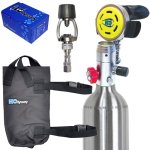
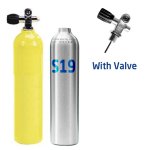
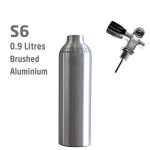
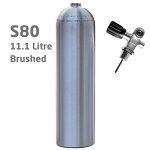
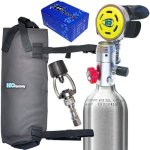
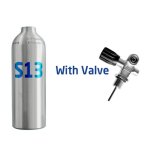
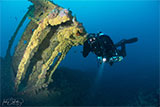
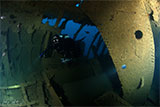
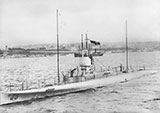
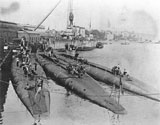
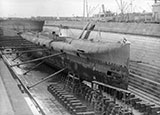
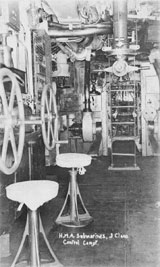
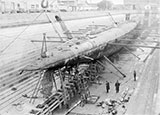
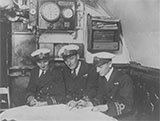
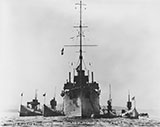
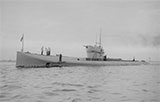
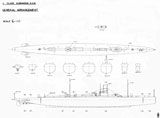

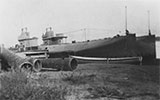
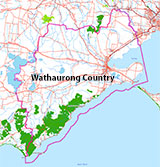


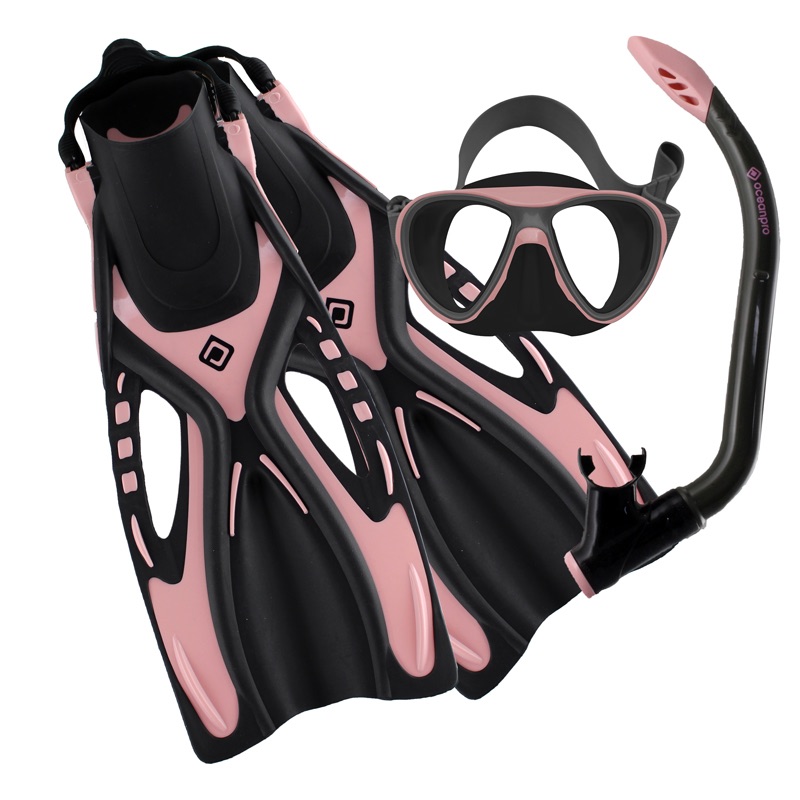








![Halcyon Infinity 30lb System [SS Small Backplate] Halcyon Infinity 30lb System [SS Small Backplate]](/diveshop/images/halcyon/Halcyon-Evolve-Wing.jpg)

